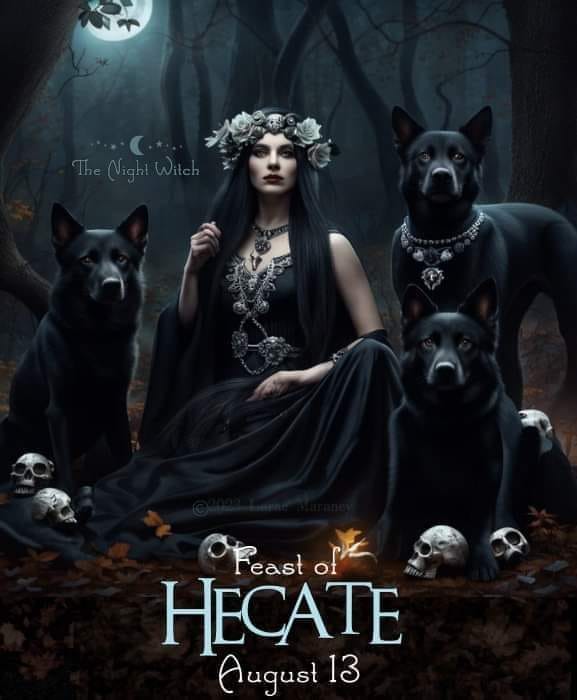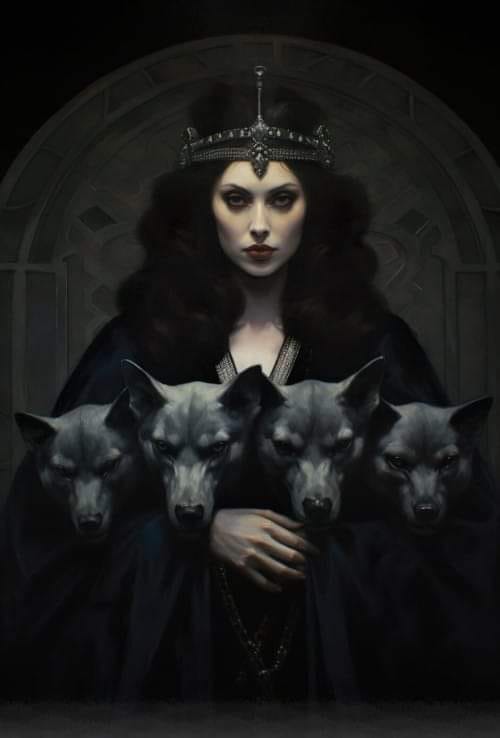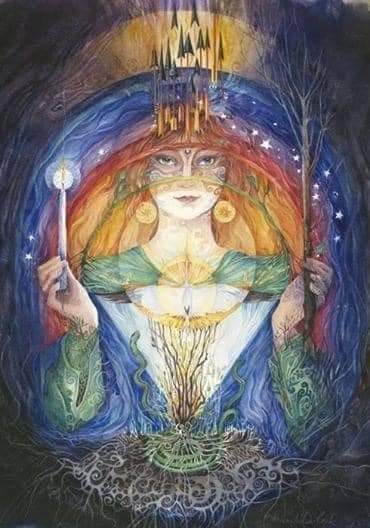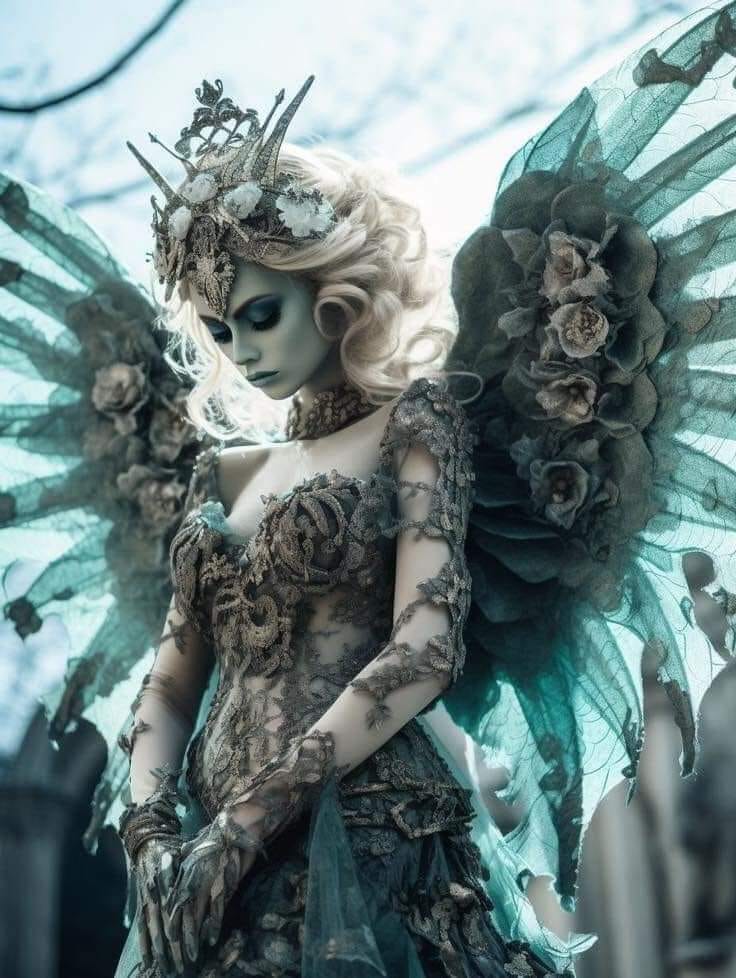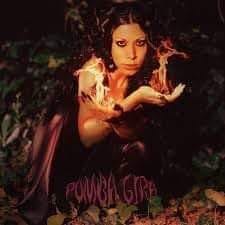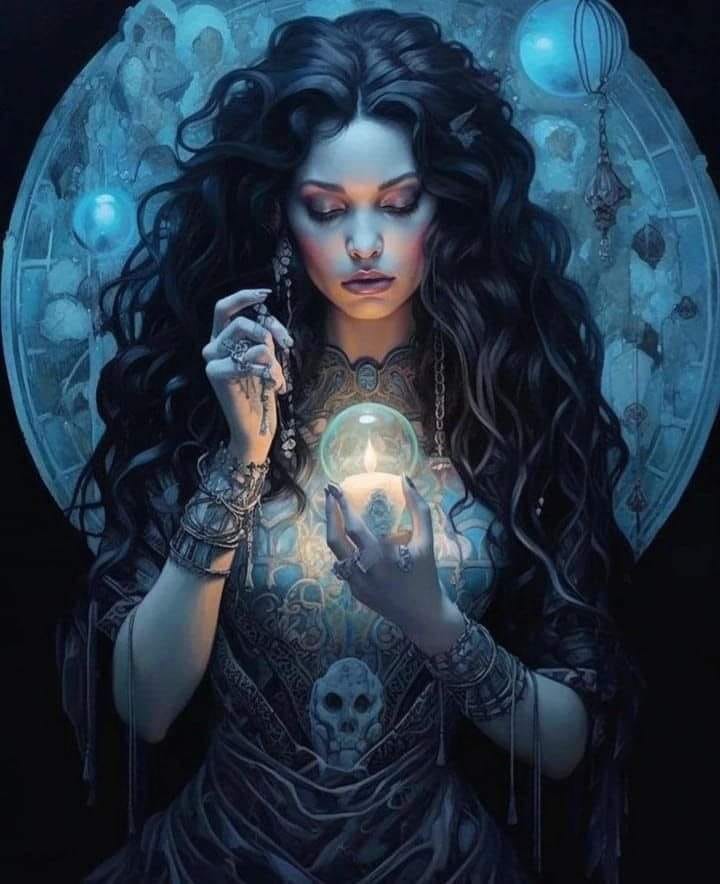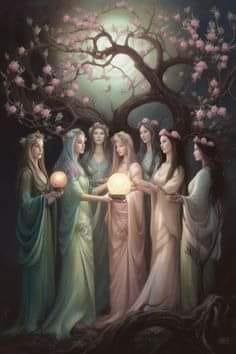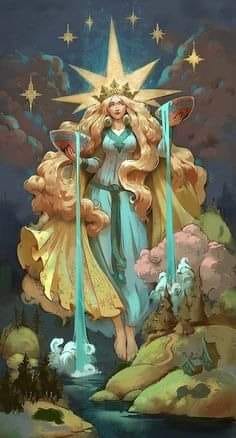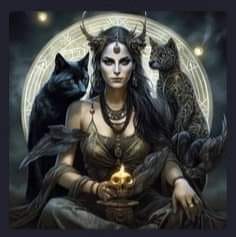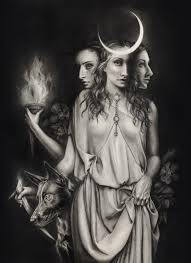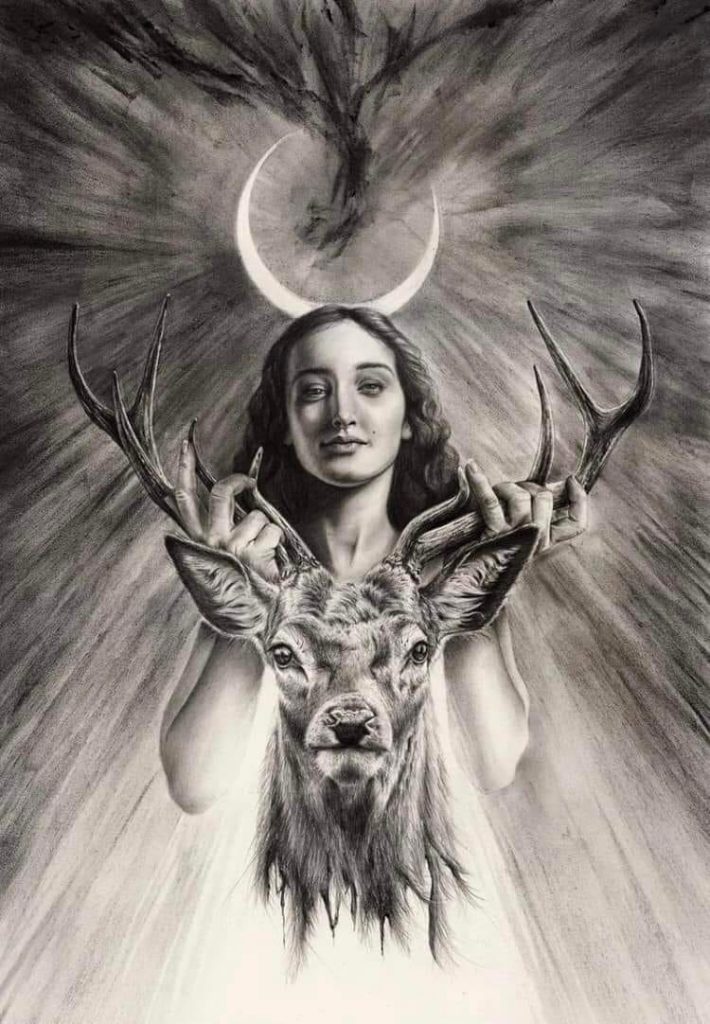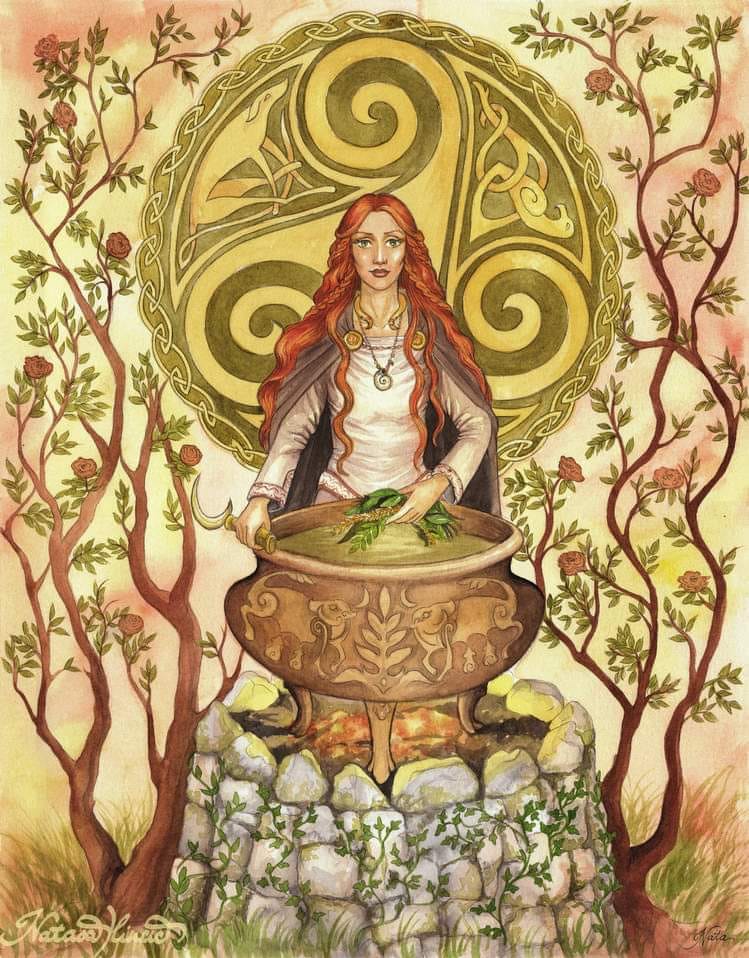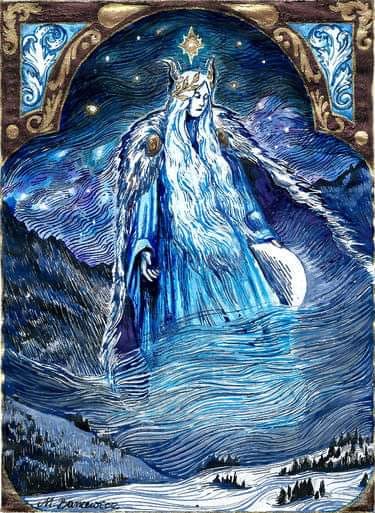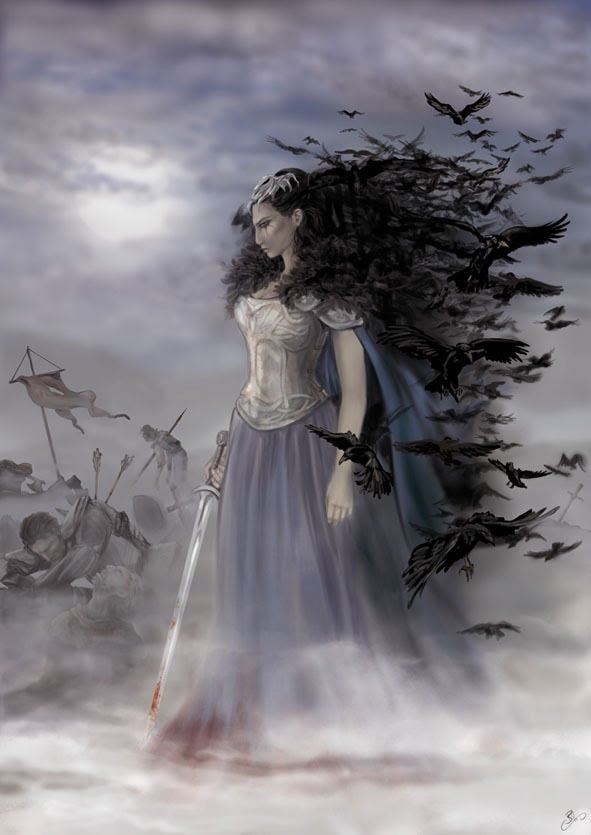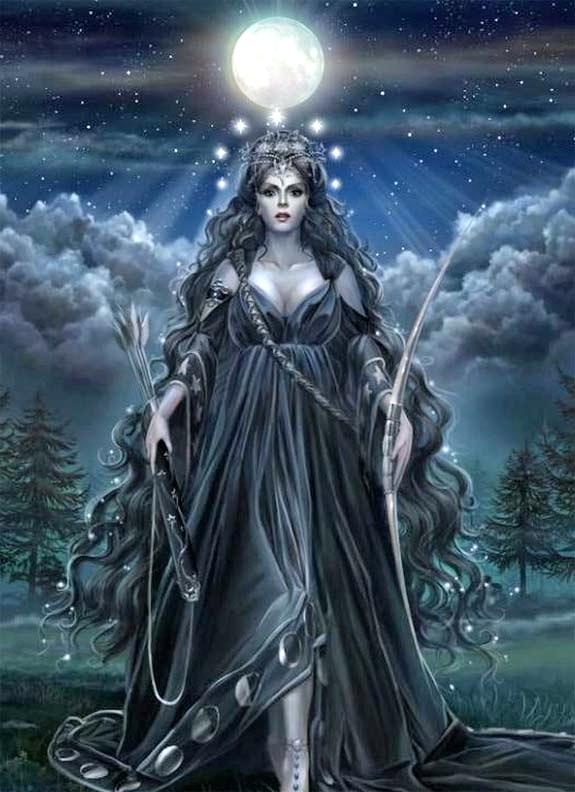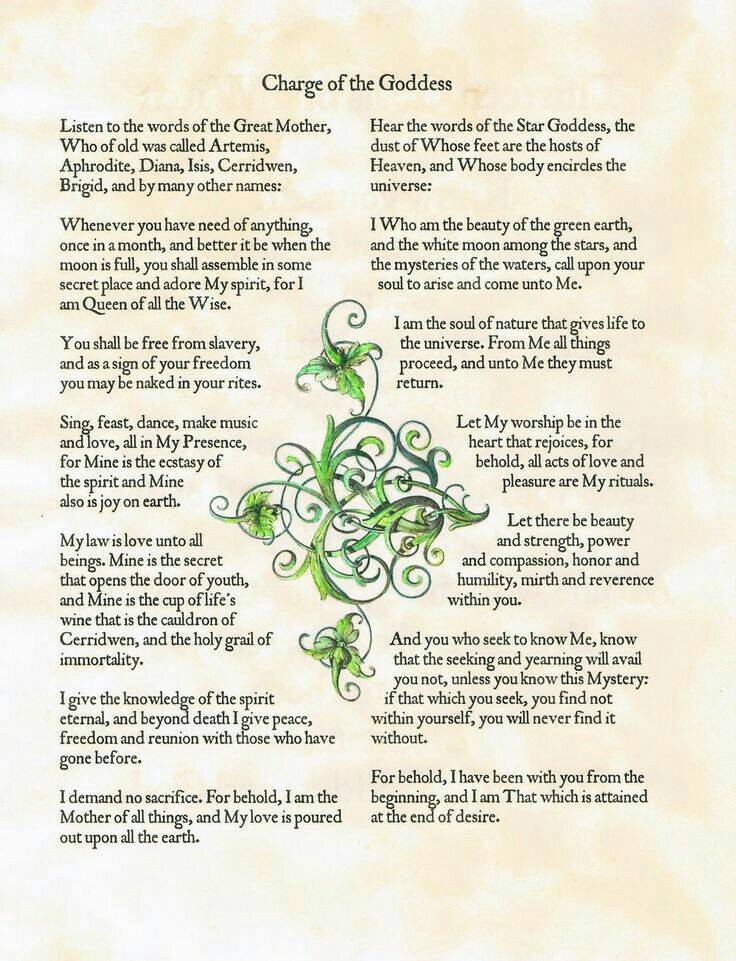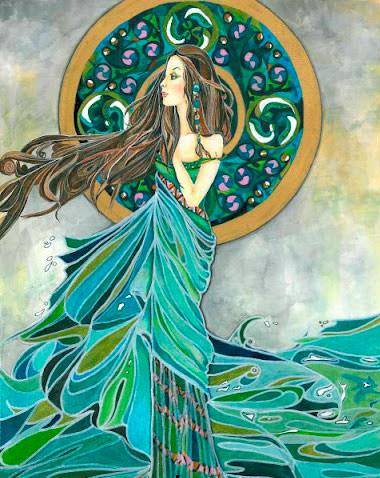August 13th is listed in modern Pagan calendars as being Hekates Night, a night sacred to Hekate. This purportedly ancient Greek festival is for propitiation, where we ask Hekate Lady of the Storms to not send any of those nasty storms among us. We are meant to leave an offering at the crossroads to Hekate and ask Her to keep us safe from storms, or even better, just keep the damaging and dangerous storms away completely.
So we will begin at the end, this is not an ancient festival and yet it also kind of is. Kind of. The struggle we have with this festival is that it is kind of based on an ancient festival, or two or three. It is also maybe based on ancient ideas, that have little to do with those ancient festivals. And it almost certainly exists as it does because of confusion over various things.
Or maybe it is completely made up and modern and we have all been finding coincidental connections that don’t actually exist. That is the problem right there, we can’t be entirely sure of who first said this festival existed in modern times. We can’t be entirely sure of why they said it existed. We can’t be sure who added the extra bits and pieces, nor why they did so.
The Modern Line
Hekates Night is mentioned in several modern Pagan books, by that name and sometimes not by any name, simply listed as a night sacred to Hekate. When these books cite other modern, but still older, books this makes the festival seem a touch more legitimate. Then you get a book by reputable or at least popular Pagan authors, they don’t even need to cite a source. They say it, it must be true.
“Her annual festival on August 13 (also that of the Roman Diana) was a propitiary one, to avert harvest-destroying storms.
The source was likely to be a book I do not have and haven’t read, Witchcraft Out of the Shadows by Leo Ruickbie. According to those who have read this book Leo notes in a side box that August 13th is a day the ancient Greeks would propitiate Hekate so She wouldn’t send crop destroying storms. He does cite a source and it’s one I was able to access through Open Library.
“[August] The 13th. Celebration of Diana and Hecate of the Moon in The Goddess Book of Days, Diana Stein (first published 1988).
The piece from Goddess Book of Days about August 13th
So here we can see the progression quite clearly. Going backwards we have numerous internet sites stating we must offer to Hekate at a crossroads to prevent storms from destroying our crops. Farrar and Bone, and Ruickbie seemingly don’t mention anything about crossroads offerings, but they do mention storms and crops/harvests and propitiation. Steins book on the other hand doesn’t mention storms at all, just protection for the harvest.
It’s like Chinese whispers.
Offering at the Crossroads
The crossroads offering is seemingly a later addition and it’s pretty obvious where it comes from – the Deipnon. Every lunar month, on the dark moon, we offer to Hekate at the crossroads to honour Her of course, but it is also a propitiation offering that in some ways asks for protection. On the dark moon She wanders the world as leader of the host of the Restless Dead. So we offer at the crossroads to feed Her and the dead and Her hounds I suppose, but also to give us some protection from the dead.
As a protective sort of offering it stands to reason that this would become part of a protection festival that has little to no details about what one should do for that festival.
The most interesting part of this festival, and actually kind of makes me really like the whole thing, is the part where it is about Hekate as a storm Goddess. As we can see, the storm part of the festival appears to have originated with Leo Ruickbie. Given that the source he cites doesn’t mention storms at all, we have to assume that even if this did somehow originate in an ancient festival, the storm part of it is a modern addition.
I suppose it makes some logical sense though, a festival to ask Hekate to protect the harvest… why? Others who have searched before me often show confusion over why Hekate of all the deities is the one being asked to protect the crops/harvests. She’s not generally noted as an agricultural deity, so why Her? I suppose the addition of protection from storms makes it seem a little more palatable to those who know Her as the Lady of Storms.
Her storm aspect isn’t mentioned very often – but it is actually a slightly popular one. Fact is we don’t have a lot of information about Her as a storm Goddess, nor much about any cultus that revolved around that aspect. But some fragments of history do exist.
The main tangible piece of historical evidence we have of Hekate being a storm Goddess – at least to some of the Greeks is from my favourite place in ancient Greece, Samothrace.
“In Samothrace there were certain initiation-rites, which they supposed efficacious as a charm against certain dangers. In that place were also the mysteries of the Corybantes and those of Hecate. The initiates supposed that these things save [them] from terrors and from storms.
So, She was given offerings, or sacrifices, in Samothrace, asking for protection from the storms – and from terror. But we can also go further. Though it isn’t generally outright stated, as an Oceanic deity, Hekate would have province over stormy weather – especially on the ocean and the shore. Add to the fact that She is also a Ouranic deity, this would seem to give Her even more rule over the weather. As Brimo, the angry one, we can also hazard a guess that She again holds sway over angry storms or any natural disaster really.
The storm aspect holds firm in reference to Hekate, but whether it should be part of this festival is another matter. As a note, I actually did check the climate and weather patterns for Samothrace – they have really nice weather during August, with rare showers and storms. But for the most part, August is not a stormy season, any storm propitiation would likely not have happened at this time of year.
Protection and Harvest or Crops
As noted above, one of the things people find issue with when it comes to this festival, is the idea of Hekate protecting the harvest/crops. Many people find the idea of Hekate and agriculture to be, well, just wrong. Some also find it difficult to understand why Hekate would be called on for protection. So we need to look at these aspects of the festival as well – do they fit Hekate or not?
“Hecate, the symbol of her varying phases and of her power dependent on the phases. Wherefore her power appears in three forms, having as symbol of the new moon the figure in the white robe and golden sandals, and torches lighted: the basket, which she bears when she has mounted high, is the symbol of the cultivation of the crops, which she makes to grow up according to the increase of her light: and again the symbol of the full moon is the goddess of the brazen sandals.
Or even from the branch of olive one might infer her fiery nature, and from the poppy her productiveness, and the multitude of the souls who find an abode in her as in a city, for the poppy is an emblem of a city. She bears a bow, like Artemis, because of the sharpness of the pangs of labour.
And, again, the Fates are referred to her powers, Clotho to the generative, and Lachesis to the nutritive, and Atropos to the inexorable will of the deity.
Also, the power productive of corn-crops, which is Demeter, they associate with her, as producing power in her.
In this one reference we can see that She is indeed linked to agriculture, as the waxing moon, “symbol of the cultivation of the crops” and also in Her association with Demeter, “the power productive of corn-crops”. This is only one reference, but sometimes that is all you need.
Protection is actually a more common thing when it comes to Hekate. The offerings given on the Deipnon are all about asking Her for protection – as well as being just offerings to Her, the dead and Her hounds. One of Her epithets is Apotropaios, which means “averter” and is in reference to Her being a protector, averting evil. She is also named Medousa, Protector and Pylake, Guard, Who Keeps Watch.
1Nemoralia – August 13th
There is an ancient Roman festival called the Nemoralia which was held on either the 13th-15th of August or over the full moon of August. This festival is in honour of Diana Nemorensis. Women would hold a torch procession to Lake Nemi, they would leave Diana various offerings as well as tokens of gratitude and requests for various help especially healing.
Diana was often heavily conflated with Hekate, both being named Trivia – indeed one can see in Diana the beginnings of the modern triple goddess. Hekate is of course a torch bearing Goddess, making this festival peculiarly suited to Her, even without the Diana conflation. Some, including Wikipedia, state that during the festival Hekate is also given offerings of garlic – but I can’t find the source of that.
This festival seems to have little to nothing to do with storms, harvests or propitiation and so doesn’t really match up with the modern festival very well in that way. But the date is quite significant and cannot be ignored.
It is worth noting too that James Frazer (Golden Bough) notes that Nemoralia is the festival that was eventually turned into the Feast of the Assumption, this doesn’t seem important at all until we look at the above quote from our oldest modern reference, the Goddess Book of Days. “The 13th. Celebration of Diana and Hecate of the Moon in pre-Hellenic Greece, to protect the harvest. Origin of the Assumption Day in the Church Mary cycle. “
Kourotrophos
The ancient Greek calendars were luni-solar. The years were marked by the solstices or equinoxes (region dependent), for example the first day of the year in Athens was the first new waxing moon after the summer solstice. The months thereafter were purely lunar, beginning on the first waxing moon, ending on the dark moon. This means that no matter how we spin it, the calendars back then can never match our calendar today. There was no August 13th, because there was no August. And even if there was an August, it would not be the same time as it is now, but instead would be based on the solstices and lunar months.
August generally coincides with the month of Metageitnion in the Attic calendar, this year Metageitnion began on July 25th and will end on August 22nd. On the 16th day of Metageitnion, this year August the 9th, the festival of Kourotrophos was (and is) held. Kourotrophos is the name of the Goddess who protects children and is also an epithet of numerous Goddesses, including Artemis and Hekate. Thus, for this particular festival Hekate and Artemis, as Kourotrophos, were and are honoured, offered to and sacrificed to.
Though this festival has nothing in common with the modern 13th festival, we can see something else that could match up. The date. Since the calendars don’t match up, the 16th of Metageitnion is on a different day in August (perhaps rarely July and/or September) each year. This means it isn’t impossible for the Kourotrophos festival to land on August 13th, in fact it is highly likely to have happened.
Whether this could have contributed to the date of Hekates Night is impossible to know. But fact is it wouldn’t be the first time a festival is given a static annual date based on a confusion over a yearly changeable date. I suspect this is what happened with one (or both) of the November festivals to Hekate, but with the Deipnon instead of an annual festival.
If we look back to the years before our first modern link was published in 1988, we can see that the full moon was on August 11th in 1984, and two days later would have been the Kourotrophos festival – the 13th.
Further Dating
There are two more possibilities or connections to the 13th and Hekate. The first is the possibility, though I call it the least likely, that the date is simply because one year the Deipnon fell on the 13th of August and people got confused thinking the festival always happened on the 13th.
The other is this interesting statement,
“The time was at hand when smoke fills Diana’s grove, Her sanctuary at Nemi, for a runaway slave made king, Hippolytus’ hidden lake glowing. Diana herself crowns Her ancient hounds, polishes up her arrows, and allows The wild creatures to pass in safety: all the land of Italy Celebrating the Ides of Hecate, and every hearth purified.” – Silvae, by Statius.
This is obviously in reference to the time of the Nemoralia, which happens over the 13th of August (or the full moon of August) in ancient Rome. But the interesting part here is how that particular time of the month of August is not called the Ides of August (or whatever name the month had back then) but is instead called the Ides of Hekate.
There are also two more curiosities that also coincide with this time of the year, though I don’t think they mean anything for this festival I find them interesting nonetheless. The first is that August 12 is usually during the period referenced as the dog days of summer, named for the dog star Sirius. According to Wikipedia (ever so trustworthy) the ancient Greeks associated this time with, among other things, sudden thunderstorms. Why is this of note, other than the thunderstorms mention? Because of the connection between Sirius and the Titan Perses – father of Hekate.
The second curiosity is the Perseid meteor shower which is during August and, this year at least, happens to peak on the 12th. The shower is named for the constellation they appear to come from, Perseus. Not that special, until you again consider the father of Hekate. He is not Perseus of course – but they do share a similar name. As I said, it means nothing but it is interesting anyway.
Hekates Night Conclusion
After this super long post, what have we discovered?
The middle of August coincides with many things that relate to Hekate. The Nemoralia festival, the Kourotrophos festival, possibly a Deipnon one year, the Ides of Hekate, and loosely the dog days of summer. Nemoralia is however the most likely originator for the modern festivals date.
The things observed in the festival all match with Hekate to some degree – She is associated with storms and protection from storms. She is associated with harvests. She is associated with protection and propitiation. She is associated with crossroads and is often offered to on them.
This festival is based on the dating of an ancient festival (or several of them). It contains aspects that definitely relate to Hekate. But the dates of the ancient festivals do not match those aspects celebrated in the modern festival. So, it’s not an ancient festival, even if it is based on ancient things.
The sheer number of ways that Hekate is connected to this time of year is notable. This may not be an ancient festival, this may be a bit of a mixed bag of a modern festival – but any festival named Hekates Night is definitely on the correct date, whatever its origins and meanings.


